The Heatsink
Heatpipes poking up into several dozen fins seems to be the flavour of the year for heatsinks, and the Tuniq Tower 120 is no exception. The difference here is that the aluminium fins are designed in a funky wave pattern that is matched by the branded, black metal fan cover at the top.Thankfully, the fins don’t double as a deadly weapon (unless you throw it at someone) that can slice poor pinkie tips. We’ve previously found that other brands like Asus or the Thermaltake V1 specifically have come with fin edges that are incredibly sharp. The advantage is now I can't be fingerprinted, I suppose. Take that, CSI.
“Only” three copper heatpipes are used to transmit the heat from the copper base to the fins, and these fins are high enough that the design shouldn’t have problems with motherboard heatpipes surrounding the CPU. People with fans on the sides of their cases though may have problems here though unless the case is particularly deep. Even if your case is deep enough, A side case fan will be pushing air onto the blank top of the heatsink anyway.
The base of the 'sink is flat and well milled, but not polished to a shine like you would find with a Zalman. The more anal among you will want to crack out the 1200 Grit for a quick wet 'n dry, but insisting on a mirror finish is just silly when it inevitably gets destroyed the instant you mount it. It's mostly done because it just looks better for pictures in reviews like these.
There are two varieties of the Tower 120mm – one with a standard nine finned black fan, and one with a "unique" blue LED fan. We have the plain black fanned version here, which fits nicely with the overall look. However, judging from the promotional pictures on the Tuniq site, the LED version looks surprisingly good too. The central fan bracket holds the fan, and four screws in the top can be used to hold it down. They’re pretty much unnecessary unless your motherboard has a strange upside down mounting, or it's sat next to your "Richter scale registering" sub or something?
The gap the fan sits in is precisely milled so it shouldn’t vibrate, but it does mean only 25mm deep fans can be used if you have a particular favourite. While it can smoothly drop in and out it chooses not to; I really wish someone would introduce Tuniq to the wonders of case braiding or spiral wrap, because getting the provided fan back into the central slot is an exercise in patience that makes teaching bricks to speak appealing.
It is only four cables but they keep getting caught as you drop them in. You find yourself trying to wrap your hand around it for support, while pushing the fan with your palm and simultaneously organising the cables to be in a particular way with the tips of your other fingers. In contrast, I dropped the Noctua fan with single braided cable in - which it took all of three seconds and didn't make me want to resort to primal scream therapy.
Having ranted about all that – I must say I like the fact I can use my own choice of fan if need be. Unfortunately, my personal favourite is a Panaflo LA1 which is 38mm deep, but the idea is there and all it takes is a couple of normal fan screws to do the job, rather than a degree in Mechanical Engineering.
The included fan is rated at just 20dB at 1,200RPM but a significantly larger 34dB at 2,000RPM. Remember that every 2-3dB = twice as loud, so at 34dB the fan is between 4-6x louder than at 20dB. According to the Tuniq site, the thermal resistance also drops by around 25 percent between these values though – however we’ll be most interested in the lowest value, because no one enjoys working or gaming next to a jet engine.
The included fan controller is on a PCI bracket that plugs into the extra two-pin connector on the fan. It looks professionally made but we’d like a few more options – for those without a spare PCI bracket how about a front 3.5” bay adapter or a small rheostat that sits on the end of the fan cable? We all know how quickly PCI slots are getting used up what with multiple dual height graphics cards, extra USB brackets, PPUs and other peripheral cards and sticking an arm around the back of a case is hardly the most convenient option.

MSI MPG Velox 100R Chassis Review
October 14 2021 | 15:04


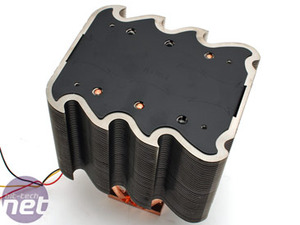
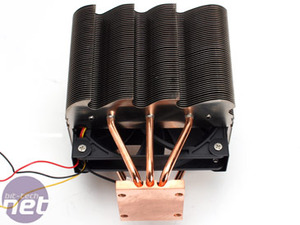
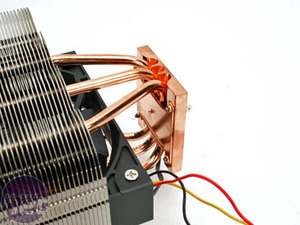
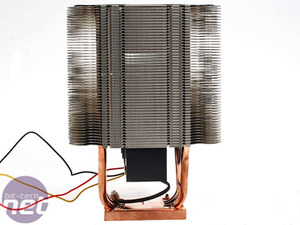
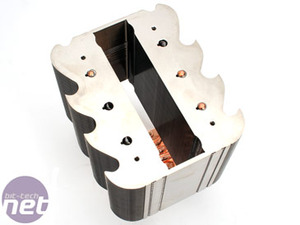
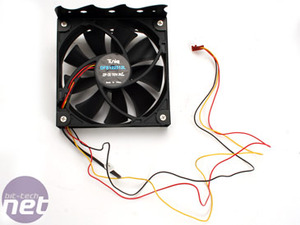







Want to comment? Please log in.